#ocular rosacea treatment
Video
youtube
Ocular Rosacea Treatment - 7 Tips to Help get Relief!
#ocular rosacea#rosacea#ocular rosacea treatment#rosacea treatment#red eyes#red eyelids#dry eyes#ocular rosacea vs dry eye#dry eye vs ocular rosacea#red eye treatments#treatments for red eyes#doctor eye health#dr eye health#eye health#eye doctor#optometrist
1 note
·
View note
Text
Skin With Rosacea: Solid Tips to Improve Your Skin
Disclosure
Some of the links on this site are affiliate links, including links in images. This means that if you click on such a link and purchase something, I will receive an affiliate commission at no extra cost to you. I need income to continue bringing you useful content and I've got to eat, right?
Do You Have Skin With Rosacea?

Acne Rosacea
Skin with Rosacea presents itself with redness on your skin, visible blood vessels, bumps (they can be solid bumps or pus-filled pimples), and pimples that primarily affect the center of your face.
Around 16 million Americans suffer from Rosacea, making it a widespread condition, yet the exact cause is unknown. Read on to learn what triggers rosacea flare-ups, symptoms to look out for, and proven treatment options to reduce facial redness and irritation from this troublesome skin disorder.

Skinception's Soothing Rosacea Serum
What is Rosacea and What Causes It?
Rosacea is a common inflammatory skin condition that results in pronounced facial redness and bumps that resemble acne. It typically begins between ages 30-50 and tends to affect those with fair skin. While the cause is unknown, rosacea often runs in families and has been linked to immune system dysfunction, microscopic mites living on the skin, and blood vessel abnormalities.
The condition develops in phases, beginning with flushing and visible blood vessels on the nose and cheeks. Without treatment, facial redness becomes more persistent, the skin may thicken and enlarge, and bumps and pimples appear. In severe cases, the nose may become swollen and enlarged from excess tissue. Ocular rosacea can cause red, irritated eyes.
What Triggers Rosacea Flare-Ups?
Many factors can trigger rosacea flare-ups and worsen symptoms. Common rosacea triggers include:
- Sun exposure
- Hot weather or overheating
- Spicy foods
- Alcohol
- Emotional stress
- Hot beverages
- Certain skin care products
- Strenuous exercise
Avoiding personal triggers is key to preventing flare-ups and keeping rosacea under control. Keeping a rosacea diary can help identify your unique triggers.

Skinception Soothing Rosacea Serum - Order Now
Recognizing the Symptoms of Rosacea

Rosacea
Rosacea has several distinct signs and symptoms to look out for:
- Flushing or frequent blushing
- Persistent redness on the nose, chin, cheeks, and forehead
- Small blood vessels visible on the face
- Acne-like bumps or pimples on the cheeks, nose, and forehead
- Watery, irritated eyes (ocular rosacea)
- Thickening or enlarged nose tissue (advanced rosacea)
- Burning or stinging facial skin
The presence of one or more of these symptoms may signal rosacea, especially if the redness lasts longer than 10 minutes. See a dermatologist for an evaluation.
Ocular Rosacea
A subtype of rosacea known as ocular rosacea causes irritation and inflammation of the eyes. About 50% of people with rosacea also experience ocular (of or connected with the eyes or vision) symptoms.
Signs and symptoms may include redness, burning, itching, excessive tearing, blurred vision, light sensitivity, and sensation of a foreign object in the eye. This condition results from inflammation of the oil glands around the eyelids. Left untreated, it may cause eye dryness, recurrent styes, swollen eyelids, and potential vision loss from corneal damage. Using preservative-free artificial tears, warm compresses, and ophthalmic medications can help control symptoms.
It is important that you see an ophthalmologist at the first signs of eye irritation, as prompt treatment is key to preventing permanent eye problems. Maintaining eyelid hygiene and following a rosacea skin care regimen may also provide relief.
Rosacea Treatment
Since there is no single test for rosacea, diagnosis involves assessing symptoms and ruling out similar conditions like acne, allergies, and eczema. Once diagnosed, treatment focuses on managing symptoms and preventing progression.
Self-help measures include avoiding triggers, using only gentle skin care products, and diligent sun protection with SPF 30 or higher. Green-tinted makeup and creams can neutralize facial redness.
If self-care isn't enough, medications or laser therapy may be prescribed. Common rosacea treatments include:
- Topical antibiotics to reduce inflammation
- Low-dose oral antibiotics
- Topical brimonidine to constrict blood vessels
- Intense pulsed light therapy to diminish small blood vessels
- Isotretinoin for severe, cystic rosacea
With professional treatment and lifestyle adjustments, most people can achieve control over rosacea symptoms and keep flare-ups to a minimum. Though incurable, rosacea can often be effectively managed with the right care plan.
10 Tips for Skin Care and Reducing Rosacea Flare-Ups
Implementing a combination of self-help measures and medical treatment can help those with rosacea lead normal, fulfilling lives virtually free of flare-ups. Here are 10 tips:
- Identify and avoid your personal rosacea triggers
- Apply broad-spectrum, mineral sunscreen daily with SPF 30+
- Protect your face with wide-brimmed hats outdoors
- Choose gentle skin cleansers labeled “non-irritating”
- Handle skin gently, avoiding scrubbing or harsh products
- Apply moisturizers and cosmetics designed for sensitive skin
- Reduce skin irritants like alcohol, spices, heat, and extreme temperatures
- Drink plenty of water and eat a healthy, balanced diet
- Manage emotional stress through self-care practices like yoga
- See a dermatologist to create a customized treatment plan
Controlling rosacea takes patience and perseverance, but significant improvement is possible. Pay close attention to your unique symptoms and triggers, and be proactive with self-care and medical treatment. With the right approach, it is possible to minimize rosacea's visible signs and live life normally.

Skinception's Soothing Rosacea Serum
National Rosacea Society Survey - Insurance Cover for Rosacea Patients
The survey was conducted by the National Rosacea Society and published on July 25, 2023. The findings show that while most patients have insurance coverage for prescription rosacea medications, few have coverage for laser treatments, resulting in many patients paying high out-of-pocket costs or delaying treatment.
Here is a summary of the key findings from the survey:
Survey FindingPercentageHave health insurance97%Insurance covers some or all prescription rosacea medication71%Insurance covers laser/light therapy3layed treatment due to lack of insurance or high copays52%Paid out-of-pocket for rosacea treatment66%Out-of-pocket $100013%Results from a survey of 560 rosacea patients.
Skin With Rosacea: Frequently Asked Questions
What is rosacea?
Rosacea is a common skin condition that causes redness on the facial skin. It is characterized by visible blood vessels, bumps, and pimples on the affected areas.
What are the symptoms of rosacea?
The symptoms of rosacea include redness on your face, visible blood vessels, bumps and pimples, and eye symptoms such as redness and irritation.
What causes rosacea?
The cause of rosacea is unknown, but it is believed to be a combination of genetic and environmental factors. Certain triggers, such as sunlight, stress, and certain foods, can aggravate the condition.
Who is at risk for rosacea?
People with fair skin, a family history of rosacea, and a history of sunburns are more likely to develop rosacea. It is more common in women and individuals between the ages of 30 and 50.
Is there a cure for rosacea?
Currently, there is no known cure for rosacea. However, there are various treatment options available to manage the symptoms and reduce the frequency of flare-ups.
What are the treatment options for rosacea?
Rosacea treatment may involve topical and oral medications, laser therapy, and lifestyle changes. It is important to consult with a dermatologist for a personalized treatment plan.
Can rosacea come and go?
Yes, rosacea symptoms can come and go. Some individuals experience periods of remission where they have few or no symptoms, while others may have persistent symptoms.
Does rosacea resemble acne?
Yes, rosacea can resemble acne in some cases. However, unlike acne, rosacea does not cause blackheads or whiteheads. It is important to differentiate between the two and seek appropriate treatment.
How can I protect my skin if I have rosacea?
To protect your skin if you have rosacea, it is essential to use gentle skincare products, avoid triggers such as sunlight and hot temperatures, and apply sunscreen with a high SPF. Additionally, maintaining a consistent skincare routine can help keep your skin healthy.
What are the types of rosacea?
There are several types of rosacea, including erythematotelangiectatic rosacea, papulopustular rosacea, phymatous rosacea, and ocular rosacea.
Erythematotelangiectatic Rosacea
This causes persistent redness, flushing, and visible blood vessels in the skin.
Papulopustular Rosacea
This results in breakouts similar to acne with red bumps on your face and pus-filled pimples.
Phymatous Rosacea
This leads to thickening skin and enlargement of the nose.
Ocular rosacea
This causes red, irritated, and dry eyes.
Many people have overlapping symptoms of different rosacea subtypes. Identifying your subtype can help guide treatment to target your particular manifestations.
Links
Natural Wellness Solutions
Best Essential Oil for Skin
Best Essential Oils for Skin

© Natural Wellness Solutions
Read the full article
2 notes
·
View notes
Text
Rosacea Aid: A Comprehensive Look at Contemporary Therapy Methods
Rosacea is a persistent skin ailment known by inflammation, visible blood boats, and frequently little, red, pus-filled bumps on the face. While there's number remedy for rosacea, various treatment options are available to manage its signs effectively. This short article seeks to provide a thorough guide to navigating the world of rosacea treatment, giving insights in to both old-fashioned and innovative approaches.
Knowledge Rosacea:
Before delving in to treatments, it's crucial to know the causes and types of rosacea. Common sparks contain sunshine, pressure, spicy meals, and certain skincare products. Rosacea is often categorized into subtypes, including erythematotelangiectatic, papulopustular, phymatous, and ocular rosacea. Determining the specific subtype is needed for tailoring a highly effective therapy plan.
Old-fashioned Treatments:
Topical Drugs: Physicians often prescribe external drugs such as metronidazole, azelaic p, or ivermectin to reduce inflammation and redness. rosacea and treatment
Dental Antibiotics: In cases of moderate to serious rosacea, common antibiotics like doxycycline or tetracycline may be encouraged to manage inflammation and reduce flare-ups.
External Steroids: While not on average the first choice due to possible side effects, short-term usage of relevant steroids might be recommended to ease redness and swelling.
Revolutionary Strategies:
Laser Therapy: Developments in laser engineering have generated the progress of remedies like intense pulsed mild (IPL) and pulsed dye lasers. These goal body vessels, reducing inflammation and increasing overall epidermis tone.
Relevant Brimonidine Serum: Brimonidine is just a vasoconstrictor that could quickly lower inflammation by narrowing blood vessels. It comes in serum variety for relevant application.
Skincare and Sun Safety: Delicate skincare workouts using non-irritating products are vital for handling rosacea. Sunlight safety, including broad-spectrum sunscreen, aids in preventing UV-triggered flare-ups.
Holistic Strategies:
Nutritional Adjustments: Determining and preventing trigger meals, such as spicy dishes and liquor, may may play a role in managing rosacea symptoms.
Pressure Management: Methods like yoga, meditation, and strong breathing workouts may help reduce tension, a typical trigger for rosacea.
The Significance of Skilled Advice:
Specific answers to therapies vary, and what works for one person might not be efficient for another. Visiting with a physician is essential to creating a individualized therapy plan on the basis of the unique characteristics of the individual's rosacea.
Conclusion:
Moving the journey of rosacea therapy involves a mix of old-fashioned, impressive, and holistic approaches. By knowledge the causes, distinguishing the subtype, and functioning closely with a dermatologist, people can develop an extensive strategy to control their symptoms effectively. With breakthroughs in skincare and medical systems, the path to sharper skin for people that have rosacea is continually evolving.
0 notes
Text
Blepharitis Treatment: Your Guide to Seeking Expert Care
Blepharitis, a common and often chronic eye condition, can be a source of discomfort and frustration for those who suffer from it. Inflammation of the eyelid margins, often accompanied by redness, itching, and irritation, can significantly impact your quality of life. Seeking the guidance of a specialized eye doctor is crucial for effective blepharitis treatment. In this article, we will explore the condition, the role of an eye doctor, and the various treatment options available to help you find relief.
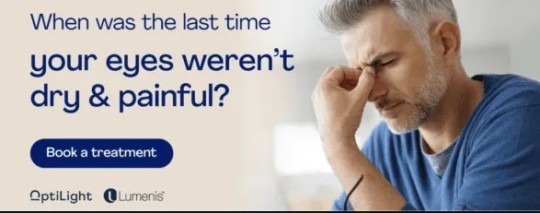
Understanding Blepharitis
Blepharitis is characterized by the inflammation of the eyelid margins, typically occurring at the base of the eyelashes. It can be caused by various factors, including bacterial overgrowth, clogged oil glands, or skin conditions. The symptoms of blepharitis may include red and swollen eyelids, a gritty sensation, itching, and the formation of crusts around the eyelashes.
The Importance of Consultation with an Eye Doctor
If you suspect you have blepharitis or have been previously diagnosed with the condition, consulting with an eye doctor, preferably an ophthalmologist or optometrist, is essential. These specialists have the expertise to accurately diagnose blepharitis and recommend the most appropriate treatment plan tailored to your specific case.
Diagnosis and Evaluation
During your consultation, the eye doctor will conduct a thorough examination of your eyes and eyelids. This may involve inspecting the eyelid margins, evaluating the quality and quantity of tears, and checking for any underlying factors contributing to your condition. Accurate diagnosis is the first step in crafting an effective treatment plan.
Treatment Options for Blepharitis
Blepharitis treatment typically focuses on managing the symptoms and reducing inflammation. Your eye doctor may recommend a combination of the following treatment options:
Eyelid hygiene: Regular cleaning of the eyelids with warm compresses and mild baby shampoo can help remove excess oil and debris.
Antibiotics: In some cases, oral or topical antibiotics may be prescribed to address bacterial overgrowth.
Artificial tears: Lubricating eye drops can help alleviate dryness and discomfort.
Anti-inflammatory medications: These may include corticosteroid eye drops or ointments to reduce inflammation.
Warm compresses: Applying warm compresses to the eyelids can help relieve symptoms and promote the flow of natural oils.
Lifestyle and Home Care
Your eye doctor will likely recommend ongoing home care practices to manage blepharitis. These may include maintaining proper eyelid hygiene, avoiding eye makeup during flare-ups, and using artificial tears regularly. Making these practices a part of your daily routine is crucial in managing the condition and preventing recurrences.
Management of Underlying Conditions
If your blepharitis is associated with an underlying condition, such as ocular rosacea, seborrheic dermatitis, or allergies, your eye doctor may work in conjunction with other specialists, such as dermatologists or allergists, to address the root cause of your blepharitis.
Long-Term Care and Follow-Up
Blepharitis is often a chronic condition, and it's essential to establish a long-term care plan. Regular follow-up appointments with your eye doctor will help monitor the progress of your treatment and make necessary adjustments to ensure your blepharitis remains under control.
When to Seek Immediate Care
While blepharitis is usually a chronic and manageable condition, there are instances when you should seek immediate medical attention. If you experience severe pain, sudden changes in vision, or have a high fever along with your blepharitis symptoms, contact your eye doctor or an emergency medical professional promptly.
For More Info:-
eye specialist staten island
diabetic retinopathy optomap
blepharitis treatment doctor
glaucoma treatment in staten island
0 notes
Text
Unmasking the Mystery of Rosacea: Causes and Effective Treatment Options
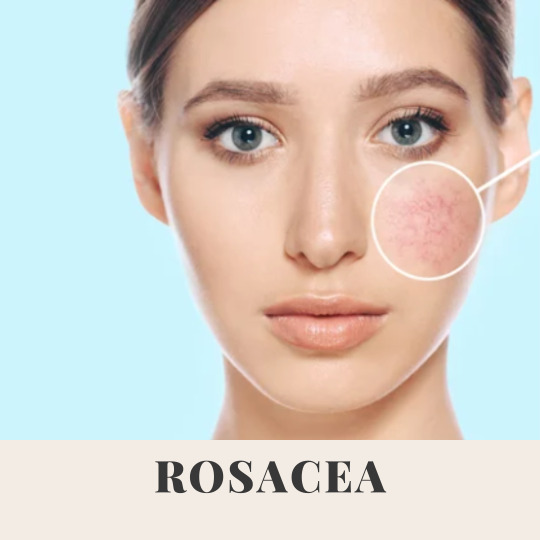
Rosacea is a chronic skin condition that primarily affects the facial area, causing redness, visible blood vessels, and sometimes small red bumps or pimples on the skin. It is a common skin disorder that often develops slowly over time and tends to affect individuals with fair skin, although it can occur in people of any skin type.
The exact cause of rosacea is not fully understood, but it is believed to result from a combination of genetic, environmental, and vascular factors. Some common triggers that can exacerbate rosacea symptoms include exposure to sunlight, hot or spicy foods, alcohol consumption, certain skincare products, and emotional stress.
The signs and symptoms of rosacea can vary from person to person, but they often include:
Persistent facial redness: This is the hallmark symptom of rosacea and typically affects the central part of the face, including the cheeks, nose, forehead, and chin.
Visible blood vessels (telangiectasia): Small, dilated blood vessels may become visible on the surface of the skin, especially on the cheeks and nose.
Acne-like bumps: Pimple-like bumps or pustules may appear on the face. These are often referred to as papules or pustules and can be mistaken for acne.
Eye problems: Some people with rosacea experience eye symptoms such as dryness, irritation, and redness. This condition is known as ocular rosacea.
Thickening of the skin: In some cases, the skin of the nose may become thicker and develop a bumpy texture, a condition known as rhinophyma. This is more common in men.
Although there is no cure for rosacea, various treatments are available to manage its symptoms and reduce flare-ups.
Treatment options may include topical creams or gels, oral antibiotics, laser therapy to reduce visible blood vessels, and lifestyle modifications to identify and avoid triggers.
Managing rosacea often involves a personalized approach, as the triggers and severity of symptoms can vary widely among individuals. Consulting with a dermatologist or healthcare provider is essential for an accurate diagnosis and to develop an effective treatment plan tailored to one's specific needs. With proper care and management, many individuals with rosacea can successfully control their symptoms and maintain healthy-looking skin.
0 notes
Text
Symptoms of Rosacea
Symptoms of Rosacea
Rosacea is a chronic skin condition that affects millions of people worldwide. While the symptoms of rosacea can vary from person to person, there are several common signs to look out for. In this blog, we’ll discuss the symptoms of rosacea in detail.
Facial redness: One of the most common symptoms of rosacea is facial redness. This redness usually appears on the cheeks, nose, and forehead and can be persistent or come and go.
Bumps and pimples: Rosacea can also cause small red bumps or pimples to appear on the face. These bumps are often filled with pus and may look similar to acne.
Visible blood vessels: Another common symptom of rosacea is the appearance of visible blood vessels on the face. These blood vessels are usually small and may appear as thin red lines.
Eye problems: In some cases, rosacea can also cause eye problems such as redness, dryness, and itching. This condition is known as ocular rosacea and can be quite uncomfortable.
Burning or stinging sensations: Rosacea can also cause a burning or stinging sensation on the face. This can be accompanied by itching or tightness of the skin.
Thickened skin: In some cases, rosacea can cause the skin on the nose to become thickened and bumpy. This condition is known as rhinophyma and is more common in men.
While these are the most common symptoms of rosacea, it’s important to note that not everyone with rosacea will experience all of these symptoms. In some cases, rosacea may also cause dry or flaky skin, and some people may experience a feeling of heat or warmth on the face.
If you experience any of these symptoms, it’s important to consult with a healthcare provider for an accurate diagnosis. Rosacea can often be mistaken for other skin conditions, so it’s important to receive a proper diagnosis before starting any treatment.
In conclusion, rosacea is a chronic skin condition that can cause a range of symptoms including facial redness, bumps and pimples, visible blood vessels, eye problems, burning or stinging sensations, and thickened skin. If you suspect that you may have rosacea, it’s important to speak with a healthcare provider for an accurate diagnosis and treatment plan.
0 notes
Text
Rosacea Treatment Market by Application and Distribution Channel: Global Opportunity Analysis and Industry Forecast, 2022-2028
Global Rosacea Treatment Market was valued at USD 7.58 Billion in 2021 and is expected to reach USD 10.72 Billion by the year 2028, at a CAGR of 5.97%.
Rosacea is a chronic inflammatory skin condition that mostly affects the face of the individual. Rosacea affects men and women differently. Women are more likely to experience symptoms on the cheeks and chin while men are mostly affected on the nose. There is no identified cause of rosacea but studies suggest that it can be a genetic bacterial infection, or due to abnormalities in facial blood vessels. Rosacea is most commonly seen in the individuals between 30-50 age group. Currently, there is no cure for rosacea, but, treatment can control and reduce the signs and symptoms associated with the disease such as redness, and bumps. Oral and topical medications may be used in combination, depending on patients' condition, and disease severity. In such cases, oral therapy is withdrawn gradually and topical is continued as maintenance therapy. However, for ocular rosacea oral therapy is maintained. Rosacea affects about 1-20% of the total population and with the growing prevalence of rosacea, the demand for rosacea treatment is expected to rise in the projected period thus, supporting the growth of the market.
Read more: -
https://introspectivemarketresearch.com/reports/rosacea-treatments-market/
The global Rosacea Treatment market report provides comprehensive market information, including classifications, definitions, and market analysis. This also helps with the awareness of various item specifics, the manufacturing cycle, the supply chain, and the cost structure. Along these lines, the understanding of the project's structural squares and key drivers of development is enhanced. To estimate the market size, boundaries such as import and fare, rules in various nations, inflation, legal and political variables, financial elements, and other minor aspects inside organizations have been broken down. The research examines the competitive landscape as well as the most current positions of major rivals in the Rosacea Treatment industry.
To learn more about this report, request a free sample copy:
https://introspectivemarketresearch.com/request/16097
Key Industry Players in Rosacea Treatment Market:
· Nestle Skin (US)
· GlaxoSmithKline plc (UK)
· Viatris Inc. (US)
· Body Glide (US)
· Sun Pharma (India)
· Perrigo (Ireland)
· Bayer (Germany)
· Pfizer (US)
· Teva (Israel)
· Allergan (Ireland)
· Bausch Health (Canada)
· Almirall (Spain)
The study enables the industry expert to keep up with the most recent trends and sector performance where they can predict a sharp decline in market share between 2022 and 2028. An important purpose of the report is to provide a thorough analysis of the market with insightful views, details, actual data, and data that has been verified by the industry.
Segmentation Analysis Includes,
By Disease Type:
· Erythematotelangiectatic
· Papulopustular
· Phymatous
· Ocular
By Treatment Type:
· Laser Treatment
· Electrocautery
· Surgery
· Others
By Distribution Channel:
· Commercial Drug Stores
· Hospital Stores
By Region:
· North America (U.S., Canada, Mexico)
· Europe (Germany, U.K., France, Italy, Russia, Spain, Rest of Europe)
· Asia-Pacific (China, India, Japan, Singapore, Australia, New Zealand, Rest of APAC)
· Middle East & Africa (Turkey, Saudi Arabia, Iran, UAE, Africa, Rest of MEA)
· South America (Brazil, Argentina, Rest of SA)
Will you have any doubt about this report? Please contact us on:
https://introspectivemarketresearch.com/inquiry/16097
Key Benefits of This Market Research:
· Industry drivers, restraints, and opportunities covered in the study
· Neutral perspective on the market performance
· Recent industry trends and developments
· Competitive landscape and strategies of key players
· Potential and niche segments and regions exhibiting promising growth covered
· Historical, current, and projected market size, in terms of value
The research report includes specific segments by region (country), by manufacturers, by Type and by Application. Market segmentation creates subsets of a market based on product type, end user or application, Geographic, and another factor. By understanding the market segments, decision maker can leverage this targeting in product, sales, and marketing strategies. Market segments can power your product development cycles by informing how you create product offerings for different segments.
Purchase This Report: -
https://introspectivemarketresearch.com/checkout/?user=1&_sid=16097
For the competitive landscape, the report also introduces players in the industry from the perspective of the market share, concentration ratio, etc., and describes the leading companies in detail, with which the readers can get a better idea of their competitors and acquire an in-depth understanding of the competitive situation. Further, mergers and acquisitions, emerging market trends, the impact of COVID-19, and regional conflicts will all be considered.
Related Report: -
https://introspectivemarketresearch.com/reports/sensitive-skin-care-product-market/
https://introspectivemarketresearch.com/reports/skin-tightening-treatment-market/
https://introspectivemarketresearch.com/reports/probiotic-skin-care-cosmetic-product-market/
About us:
Introspective Market Research (introspectivemarketresearch.com) is a visionary research consulting firm dedicated to assisting our clients to grow and have a successful impact on the market. Our team at IMR is ready to assist our clients to flourish their business by offering strategies to gain success and monopoly in their respective fields. We are a global market research company, that specializes in using big data and advanced analytics to show the bigger picture of the market trends. We help our clients to think differently and build better tomorrow for all of us. We are a technology-driven research company, we analyze extremely large sets of data to discover deeper insights and provide conclusive consulting. We not only provide intelligence solutions, but we help our clients in how they can achieve their goals.
Contact us:
Introspective Market Research
3001 S King Drive,
Chicago, Illinois
60616 USA
Ph no: +1-773-382-1047
Linkedin| Twitter| Facebook
Email: [email protected]
0 notes
Link
Ocular Migraine is a term that has been used to refer to a number of migraine subtypes that are characterized by a variety of visual disturbances including visual loss, blind spots, zig-zag lines, or seeing stars. Unlike other forms of migraine, they may occur without any accompanying head pain. It’s not uncommon for a single patient to experience a wide range of visual symptoms.
0 notes
Text
Rosacea of the Nose: Causes, Symptoms and Treatment
Disclosure
Some of the links on this site are affiliate links, including links in images. This means that if you click on such a link and purchase something, I will receive an affiliate commission at no extra cost to you. I need income to continue bringing you useful content and I've got to eat, right?
What is Rosacea of the Nose and Why You Should Care?

A curious characteristic of rosacea of the nose (medically known as Rhinophyma) is the emergence of minuscule blood vessels that weave a web-like pattern. This peculiar characteristic arises as a result of inflammation and expansion in response to stimuli such as heat, piquant cuisine, or certain drinks.
The term rhinophyma can be used loosely to describe the condition of rosacea affecting the nose, even in early or milder stages. Some physicians and references use rhinophyma to describe any rosacea of the nose, while others reserve the term only for the most advanced stage.

Skinception's Soothing Rosacea Serum - click for more information
Rhinophyma: Advanced Stage
Severe rosacea of the nose can develop where disfiguring tissue proliferation and enlargement of the nose can occur.
Even though the tissue changes are permanent, this advanced condition can be treated by laser.
Laser resurfacing procedures using a CO2 laser or an erbium laser can reduce the size of the nose, remove abnormal tissue overgrowth, and reshape the nose by smoothing its surface.

Rosacea of the nose - pre and post-op photos
Rosacea in General
Rosacea in general is a chronic skin condition that causes redness, visible blood vessels, and sometimes small, red, pus-filled bumps on the nose, cheeks, forehead, and chin (which can resemble acne). Although the exact cause is unknown, rosacea often worsens over time if left untreated but don't be too disheartened because treatment can help. Learning the causes, triggers, and symptoms of rosacea can help prevent flare-ups and allow for early treatment. Controlling rosacea is crucial for reducing redness, swelling, and irritation of the facial skin.
Symptoms and Causes of Rosacea: What to Look For
What are the symptoms of rosacea in general?
Common symptoms of rosacea affecting the nose include:
- Redness, flushing, and visible broken blood vessels on the nose
- Swelling of the nose
- Acne-like breakouts with small red bumps or pustules
- Thick, bumpy skin on the nose
- Oily skin
- Sensitive or burning skin
- Watery, irritated eyes (ocular rosacea)
What causes rosacea?
While the exact cause of rosacea is unknown, various factors can trigger flare-ups. Potential causes and things that may make rosacea worse include:
- Blood vessel abnormalities
- Chronic inflammation
- Demodex mites in facial skin
- Genetics
- Spicy foods
- Hot beverages
- Alcohol
- Sun exposure
- Stress
- Hot weather
- Strenuous exercise
- Certain skincare products
Rosacea in general tends to affect people with fair skin between ages 30-60 and is more common in women. People with a family history are also more susceptible.
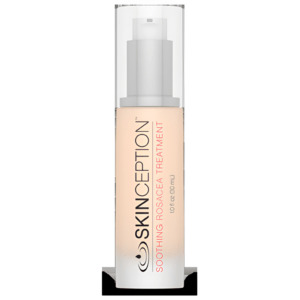
Skinception Soothing Rosacea Serum - Order Now
Rosacea of the Nose Compared to General Rosacea
There are differences between rosacea of the nose and general rosacea:
- Rhinophyma primarily affects the nose, while regular rosacea can affect the cheeks, forehead, chin, and nose. Rhinophyma specifically causes thickening of the skin on the nose.
- Rhinophyma is more common in men, while regular rosacea affects both genders.
- Rhinophyma typically occurs in the later stages of rosacea and may develop years after the initial rosacea symptoms. Regular rosacea usually begins with flushing and redness.
- Nose swelling in rhinophyma is caused by excess tissue growth, including the sebaceous glands. The redness in regular rosacea is due to blood vessel dilation.
- Treatments may differ. Rhinophyma often requires surgery (like dermabrasion or laser resurfacing) to reduce the excess tissue. People with regular rosacea use various medications, make lifestyle changes, and use laser treatment to improve their symptoms.
So in summary, rhinophyma is a subtype of rosacea that specifically causes thickening and enlargement of the skin on your nose. While both types of rosacea share the underlying disease process, rhinophyma is considered an advanced stage with some distinct characteristics compared to generalized rosacea.
Rhinophyma Prevalence
StatisticValueSource LinksPrevalence of rosacea5.46%, range 0.092% to 2.41%Gether et al 2018Male to female ratio for rhinophyma5:1 to 30:1Rohrich et al 2002Mean age of rhinophyma patients5th to 7th decadeSadick et al 2008Incidence of *BCC with rhinophyma3-10%Rebora 1987*Basal Cell Carcinoma
Complications of Rosacea of the Nose
There are potentially some serious complications of rosacea of the nose:
- Rhinophyma can lead to a disfigured, bulbous appearance of the nose over time if left untreated.
- Nasal obstruction - Rosacea inflammation in the nose can cause swelling of the nasal tissues, leading to nasal congestion, sinusitis, or nasal airway obstruction. This may require surgery to correct in severe cases.
- Ocular rosacea - Some people with rosacea of the nose may also develop inflammation of the eyes (known as ocular rosacea). This can cause dryness, burning, itching or vision problems if left untreated.
- Phymatous changes - With chronic rosacea, the nose can develop thickened skin and irregular surface bumps or nodules called phymatous changes. This is disfiguring if extensive.
- Bacterial infection - The inflamed tissues may become more prone to secondary bacterial infection by bacteria like staph or strep. This would require antibiotic treatment.
- Cataracts - Rosacea in the nose may increase the risk of developing cataracts of the eyes earlier than normal.
So in summary, complications like rhinophyma, nasal obstruction, ocular issues, and phymatous changes may occur. Seeing a medical professional to get your rosacea treated can help prevent progression and limit complications of rosacea affecting your nose.
Reducing Rosacea Flare-Ups: Treatment Options
How is rosacea of the nose treated?
As there is no cure for rosacea, treatment focuses on managing symptoms. Options may include:
- Avoiding triggers: Keep a rosacea diary to identify personal triggers to help avoid them.
- Gentle skincare: Use mild cleansers, moisturizers, and sunscreen specially formulated for sensitive skin.
- Medications: Antibiotics, anti-inflammatories, and retinoids can treat bumps, pimples, swelling, and redness caused by rosacea.
- Laser and light therapy: Can reduce visible blood vessels and redness.
- Surgery: Used for severe bumps on your face or for misshapen tissue on your face; surgery can remove excess tissue.
Catching rosacea early and sticking to your treatment plan can help prevent permanent disfigurement of your nose as well as inflamed, painful facial skin. See a dermatologist at the first signs of symptoms.
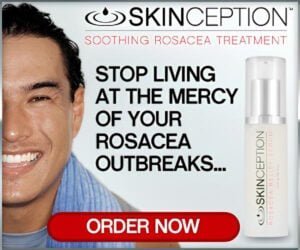
Skinception's Soothing Rosacea Serum - click for more information
Key Takeaways
Here are important points to remember about rosacea of the nose:
- Rosacea often appears as redness, bumps, and visible blood vessels on the nose and cheeks.
- Triggers like sun, stress, spicy food, and alcohol can make your symptoms worse.
- Treatment includes avoiding triggers, gentle skincare, medications, and light therapy.
- Managing rosacea is crucial to reduce symptoms and prevent permanent facial disfigurement.
- Treatment for rosacea should be sought early should symptoms appear. See a dermatologist right away if you notice redness, swelling, or acne-like breakouts on your nose (rosacea can sometimes look similar to acne).
YouTube Videos Demonstrating Treatment for Rosacea of the Nose Using a Laser
Dr David Lim | How To Treat Rhinophyma Rosacea
You must sign in to YouTube to view this particular video. Click on the 'Watch on YouTube' link below.
https://youtu.be/PqwgGuOh4_I?si=r5MGFj8tJaqsg0PM
Reducing Rhinophyma | Contour Dermatology
Warning - graphic content.
https://youtu.be/3e012qvV5pk?feature=shared
Frequently Asked Questions
What is rosacea?
Rosacea is a chronic skin condition that causes redness, typically on the face. It can also cause other symptoms such as red bumps.
What are the symptoms of rosacea?
The symptoms of rosacea can vary, but they usually include redness, flushing, and visible small blood vessels on the face. Some individuals may also experience ocular rosacea, which affects the eyelids and eyes.
What causes rosacea?
The exact cause of rosacea is unknown, but it is believed to be a combination of genetic and environmental factors. Certain triggers such as sun exposure, spicy foods, and alcohol may worsen the symptoms.
Is there a cure for rosacea?
Currently, there is no known cure for rosacea. However, there are various treatment options available to manage the symptoms and reduce the frequency and severity of flare-ups.
How does rosacea differ from acne?
Rosacea can look like acne but rosacea and acne are two different conditions, although they can share some similarities. While whiteheads and blackheads primarily characterize acne, rosacea causes redness and flushing. Additionally, the treatment approaches for each condition may also differ.
Who can get rosacea?
Rosacea can affect people with rosacea of various ages, genders, and ethnicities. However, it is more commonly seen in fair-skinned individuals over the age of 30.
Can rosacea get worse over time?
Yes, rosacea can get worse over time if left untreated. Without proper management and lifestyle adjustments, your symptoms may become more severe and occur more frequently. Therefore it is very important to manage your symptoms.
What are the treatment options for rosacea?
There are several treatment options available for rosacea, including topical creams, oral medications, laser therapy, and lifestyle changes. The choice of treatment depends on the severity of the symptoms and your individual preferences.
Links
Natural Wellness Solutions
Skin With Rosacea
Best Essential Oils for Skin
Best Essential Oil for Skin

© Natural Wellness Solutions
Read the full article
0 notes
Text
Home

Get Rid Of Your Eyelid Illness And Meibomian Gland Disorder
Do you know the number of symptoms will cause the rise of the issue of eye infections? There are numerous possible reasons for Blepharitis, consisting of Bacterial eyelid infections such as Meibomian gland dysfunction (MGD), Dry eyes, fungal eyelid infection, and Parasites (Demodex eyelash mites). How many of you know that the Blepharitis as well as dry eyes typically occur at the same time as well as confusing whether dry eye causes Blepharitis or Blepharitis causes dry eye. Some medical professionals, as well as researchers, concluded that this happens based on these two conditions, which might be a part of a single chronic eye issue called dry eye blepharitis syndrome (DEBS). Visit our website for more tips to fix this problem.
According to the eye experts, the occurrence of dry eye is the symbol of Blepharitis, and also numerous blepharitis treatments will avoid, decrease, or eliminate these dry eye symptoms. Normally, it is associated with an overgrowth of bacteria that live along the margins of the eyelids and at the base of the eyelashes. After some time, these bacteria multiply as well as create a structure called a biofilm. This will come to bring about the development of a poisonous atmosphere that base on your teeth. Demodex feeds upon the biofilm or Parasitic eyelash mites which encourages the situation of eyelid inflammation and also makes the condition worse.
Concentrate on The Treatments For Going Through Blepharitis Treatment:
Blepharitis, chronic eye disease is associated with skin disease, such as ocular rosacea, eczema, dandruff, and also psoriasis. It will result in the occurrence of pink eyes that occur at the same time. So, what can we do to avoid this disease? Our official site will offer preventive measures and therapies for treating your eye issue. First, you should avoid eye makeup. This is since the eye makeup will certainly tend to increase the chance of infection. Stop beautifying your eye for some time to take under the control of infection. Second, you should use cosy compresses by utilizing tidy laundry or wet towels to wipe your oily debris out of your eyelids. But, you ought to not also use hot water since it will certainly harm your eyelids. You may likewise utilize a brand-new tidy towel to clean your eyelid occasionally, which decreases the spread of bacteria from one eye to another.
You can follow our essential actions to execute the easy method to clean your eyes. First, you will certainly mix an equal solution of baby shampoo as well as water. Take the warm as well as a clean wet cloth with your index finger and immerse in this soapy solution. Delicately close your eyes as well as rub the clean cloth over the lashes as well as eyelid margins numerous times in a horizontal direction. After that, rinse your cosy wet cloth completely. Repeat these steps for one more eye. You will see immediate results after using these steps. If these procedures will certainly not protect against the infection after that consult our nearby eye care provider.
Be Careful Of The Symptoms Of Blepharitis:
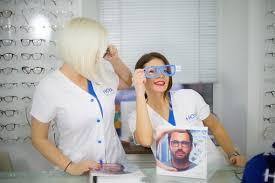
You should have to follow the precautionary measures when you find the symptoms of this disease. Dermatitis, bacteria, parasites, and viruses are the source of Blepharitis. If you have a dandruff problem, after that you are more likely to develop Blepharitis. So must keep dandruff in control which assists in decreasing the symptoms of this disease. Watery eyes treatment is also recommended by different physicians to Blepharitis affected people.
1 note
·
View note
Text
Rose Water?
Rose Water is often used in Asia and the Middle East for skincare and culinary purposes, like making desserts. Its believed to have originated from Iran.
For skincare
Rose Water can ease skin irritation, including ailments like eczema or rosacea.
It reduces skin redness and puffiness, heals cuts/burns/scars, and contains anti-aging properties.
One awesome thing is that Rose Water has powerful antiseptic properties. Due to this, Rose Water can be used in medicinal treatments (rose water has even been used in eyedrops to treat conjunctivitis, and its been used to treat ocular disease).
For Consummation
Rose Water has been used historically as a way to soothe sore throats. It’s a natural way to treat it if you’re not a fan of pills.
Rose Petals, Rose Oil, AND Rose Water has powerful antioxidants that can protect cells from damage.
Rose Water has VERY strong antidepressant and antianxiety properties. Rose Water can relax the central nervous system.
Rose Water (and Rose Oil) can relieve headaches and is commonly used in aromatherapy. This can be done by inhaling the vapor of Rose Water or applying a soaked towel of Rose Water to the head.
Rose Water aids digestion and improves bile secretion, so it is commonly used in folk medicine.
In Magick
You can use Rose Water for literally anything.
Need protection? Sprinkle it on yourself.
Glamour spells? Cleansing? Pour Rose Water in a bottle and use it as a spray.
Healing Spells? Use it in potions or poultices for consuming or topical purposes.
Enchant Food? Use Rose Water in desserts to enhance the flavor and make the spells more powerful with its magick.
Protect from Evil Eye? You can bless whatever you may use in Rose Water.
#rose water#green witch#garden witch#cottage witch#kitchen witch#witch aesthetic#witch vibes#witchblr#beginner witch#starter witch#new witch#witch#witchcraft#witches of tumblr#witches of color
108 notes
·
View notes
Photo
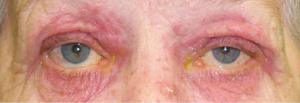
Ocular rosacea is a dermatological condition, in which eyes are mainly affected by rosacea. Or, in simple words, just to understand it well, we can say thOcular Rosaceaat when the acne rosacea spreads up to the eyes along with the other parts of the face then you can call it ocular rosacea.(via Ocular Rosacea - Causes, Symptoms, Diagnosis and Treatment)
#Skin Conditions#Ocular Rosacea Treatment#Ocular Rosacea Symptoms#Ocular Rosacea diagnosis#Ocular Rosacea Causes#Ocular Rosacea#Natural Treatment for Ocular Rosacea
0 notes
Text
What is Rosacea?
Rosacea is a common skin disease that I too often see. It has many symptoms which can include red skin that is thicker or irritated, eye problems, and pimples. In this article, I will give a brief understanding from an aesthetician’s point of view.
What is Rosacea?
Rosacea is a chronic skin disease which, in it’s beginning, looks like someone is constantly blushing or flush. This can spread to encompass beyond the nose/cheek area of the face to the entire face and/or back. Even the ears and/or chest of a client can be affected. There are so many different symptoms that doctors have classified rosacea into four distinct subtypes:
Erythematotelangiectatic rosacea: Visible blood vessels, redness, and obvious flush apperance
Ocular rosacea: appears to have a sty with red/irritated eyes and possible swollen eyelids
Papulopustular rosacea: acne-like breakouts, redness, and swelling
Phymatous rosacea: skin has a bumpy and thick texture
What is Rosacea: What Causes Rosacea
At this point in time, doctors have noticed that some people may inherit a tendency to develop the disease while the exact cause has not been determined. It has been seen to affect middle-aged and older adults more than kids. There is not any skin color that has an immunity although it has shown to be more prevalent in people with fair skin.
What is Rosacea: What is it Like to Live with Rosacea?
While there are treatments and prescriptions which can manage rosacea, a cure has yet to be found. There are several things that I have my clients do as part of their daily routine to help out with their rosacea. While it isn’t foolproof, the tips below have really given us the ability to go from having painful skin to having a piece of relief.
First and foremost always keep a skin diary. This can be a written or electronic record of a client’s flares which helps us come up with adjustments to treatments to reduce the prospect of those flares being as severe or happen at all.
Always use SPF. Not only can the sun be harmful to healthy skin, rosacea skin is even more prone to burning and long term damage. It takes seconds to protect yourself.
Use moisturizers and skincare products that are formulated for your skin conditions. Circadia has many amazing products which I have personally witnessed in action. It is always recommended to use professional skincare which is for sensitive skin with rosacea.
Follow your skincare regimen but also other lifestyle changes. Nutritionists can affect many changes in the skin on top of maintaining your mental health while aestheticians can preform effective treatments which can minimize rosacea’s appearance on the skin.
All in all, rosacea can be managed with the proper care team behind you. A dermatologist is an amazing resource if you have technical questions or if you have skin concerns. Once those are diagnosed, you can start finding your way to healthier skin!
1 note
·
View note
Text
Why Do You Need A Vitamin C Cleanser?
Visible aging signs are common in aged people. It is due to a reduction in collagen synthesis and exposure to pollutants and UV light from harsh sunlight. You can reverse this condition by using proven Vitamin C Cleansers developed using natural ingredients. Also, including Vitamin C, Vitamin A, and Vitamin E foods in daily diet helps to maintain good skin health and overall health.
Maintains a fresh skin
The best Vitamin C Cleanser - Soothing Cleanser, which is developed using natural ingredients such as Natural Rose Water, Lactic Acid, Salicylic Acid, and Glycolic Acid, eliminates dead skin cells from your skin surface. It has the strongest and purest Alpha-hydroxy acids to maintain conditioned and fresh skin without disturbing the natural oils.
Improves skin radiation
The BHAs and AHAs in this Vitamin C Cleanser improve skin complexion and radiation. It also improves skin tone and eliminates skin impurities. It is available in 200ml blue color bottles at online stores to purchase using a credit card. People of all skin conditions can use this Vitamin C Cleanser daily to maintain blemish-free skin.
Rose Water has the strongest anti-inflammatory properties. It helps to cure both internal and external ailments. It soothes irritated skin caused by rosacea or eczema. You can also use rose water to soothe your sore throat. It has been widely used in beauty products for several years. It helps you to reduce puffiness and skin redness.
Heals ocular diseases
Rose Water has excellent antiseptic properties to heal infections naturally. Therefore, it finds wide usage in medicinal and natural treatments. Eye drops comprising rose water cure eye conjunctivitis. It also helps to cure ocular disease because of its analgesic and antiseptic properties.
It safeguards your skin cells from oxidative damage because of powerful antioxidants. It quickly heals burns, cuts, and scars. It fights infections. It has anti-anxiety and antidepressant properties to relax your central nervous system and improve your mood. It provides relief from headaches. It has excellent anti-aging properties to reduce wrinkles .It also soothes irritated skin. Therefore, Soothing Cleanser, which has rose water as one of the ingredients, is the best facial cleanser to give you glowing and radiant skin. You need to wash your face and apply a Soothing Cleanser daily in the morning and evening to enjoy all these skin health benefits.
The pigmentation fighting and anti-wrinkle ingredient - Lactic Acid is incorporated in Soothing Cleanser. It brightens and smooths your skin by removing unwanted skin cells from the epidermis. It reduces pore appearance and boosts your skin tone.
Glycolic Acid eliminates the top layer of your skin. It helps to treat aging signs, acne, hyperpigmentation, and dryness. It reduces the appearance of existing fine lines and wrinkles by removing the dead skin cells from your skin surface. It retains moisture and helps to cure burning, redness, and slight stinging on your skin. BHA, the Salicylic Acid reduces acne by eliminating dead skin cells. It keeps your pores clear and clean. It offers an effective cure for whiteheads and blackheads. It also prevents breakouts in the future.
You can also use Superheal O-Live Serum, which is developed using L-Ascorbic Acid, Vitamin A, and Vitamin E, to reduce age-related wrinkles and fine lines and improve skin tone. You can buy this proven Vitamin C Serum at an online store using a credit card and start using it daily to enjoy skin health benefits.
0 notes
Text
Hydrogen inhalation experience and medical comments in patients with corneal injury
Condition introduction, patient, female, 39 years old, company employee. In June 2009, she was admitted to the Department of Dermatology of Huashan Hospital due to drug-induced "toxic epidermal necrolysis". At discharge, the rash basically subsided, but chronic corneal ulceration was accompanied by corneal neovascularization. Later, the patient stayed at home due to obvious vision loss, and often felt that his eyes were dry and painful.
After the treatment, the ophthalmology department of the other hospital used a variety of eye drops to treat with poor results. With the consent of the patient, use gauze soaked in hydrogen-rich water made of medical saline to open the eyes and apply externally 2 times/day for 1 hour/time. The observation period is 1 month.
As a result of the treatment, the patient had no eye discomfort during the wet compress, and the dryness and pain in the eyes improved after use. The recovery of corneal ulcers and new blood vessels before and after use was observed by anterior segment photography, and the improvement was not obvious.
Medical comment: The improvement of the symptoms of this case by hydrogen-rich water makes us happy to see a new treatment
Hydrogen-rich water has antioxidant properties that have the potential to break the vicious cycle of inflammation on the ocular surface. This case has shown the improvement of the patient's symptoms; in addition, current studies have confirmed that hydrogen-rich water can have a protective effect on the ocular surface tissue cells, and the ocular surface cells of the disease model animal after treatment gradually recovered to a normal state, which helps related It is extremely important in the reconstruction of the patient's ocular appearance. Whether in clinical manifestations or basic experiments, hydrogen-rich water has demonstrated its fascinating possibilities.
Although the application of hydrogen-rich water in ophthalmology is still in the preliminary stage of exploration. But it is not the first time that dermatological treatments have collided with eye diseases. More than ten years ago, IPL became one of the first-line options for the treatment of ocular surface-related diseases because a doctor noticed that rosacea patients showed improvement in synchronous ocular symptoms after primary IPL treatment.
Of course, there are still some obvious problems in the application and promotion of hydrogen-rich water in ophthalmology, such as how to choose the appropriate mode of administration and how to ensure the hydrogen concentration during the use of the drug dosage form, and so on. However, science and technology are advancing in order to meet the development needs. We are optimistic that with the further improvement of technology and dosage forms, the application of hydrogen-rich water in ophthalmology can also bloom beautifully.
0 notes
Text
Dry Eye Disease - Causes and Treatments
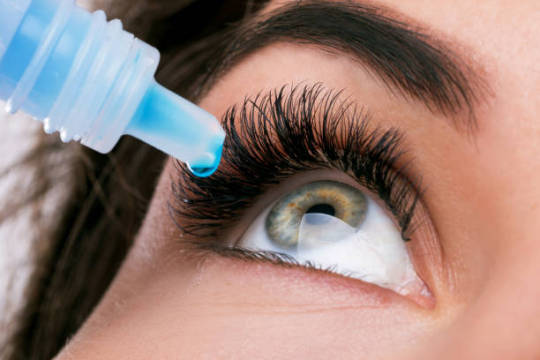
The diagnosis of dry eye can be made simply by examining the patient's facial features. Blepharitis and acne rosacea are often associated, so a look at the blink rate and completeness can help determine the cause of the disease. A physician will likely use a specialized test to determine the degree of the damage, which may be due to a defect in the genes that produce mucins. The condition can also affect the quality of life of a patient. Click here to learn more about dry eye disease and how to treat it.
One common cause of dry eye is meibomian gland dysfunction (MGD). This is a condition that results in malfunction of the meibomian glands, which are oil glands in the eyelids. MGD is a condition that causes the oily outer layer of the tear film to evaporate. In some cases, the meibomian glands will atrophy, causing the tear film to be less stable. In addition, the conditions of low humidity can lead to dry eye syndrome.
In addition to the underlying cause, a person may be experiencing signs and symptoms that are associated with other problems. This can be a problem if the patient has previously experienced blepharitis. If the symptoms are caused by a specific infection, the physician may be able to make a proper diagnosis through a facial examination. An exam of the patients' eyes and other body parts can help the doctor diagnose the condition.
Other causes of dry eye disease include ocular rosacea and inflammatory blepharitis. A doctor may also recommend the use of antibiotics or steroid eye drops. Regardless of the cause of dry eye disease, an effective treatment will reduce the inflammation and relieve symptoms. The doctor may also recommend using a steroid eye drop or ointment to treat the underlying conditions. They may also prescribe a daily regimen of cleansing and moisturizing to help the eyelids.
Some prescription and nonprescription medications are associated with the development of dry eye disease. The most common of these are antihistamines, birth control pills, and antidepressants. In addition to these, some people are prone to developing severe dry eye. A dry eye condition can be caused by many factors. There are several treatments available, including prescription steroid eye drops and antibiotics. The most effective treatment will also address the underlying cause. Additionally, you can go to this site to view dry eye disease articles on diagnosis and treatment.
The treatment for dry eye disease must address the underlying causes of the condition. If you have a history of acne rosacea, your doctor can suggest a course of antibiotics for the eyes. You can also clean the eyelids with a steroid ointment daily. If you are suffering from dry eye, your doctor will be able to diagnose the cause of the disease from your face.
This post: https://en.wikipedia.org/wiki/Dry_eye_syndrome, elaborates more on the topic so you may need to check it out.
0 notes